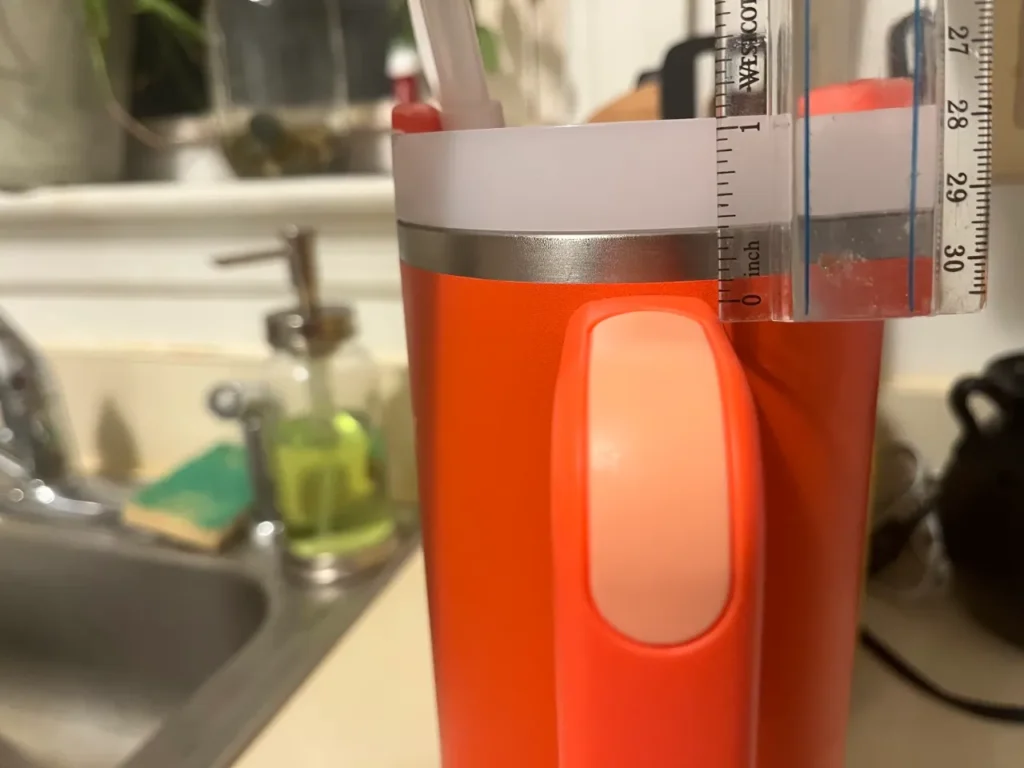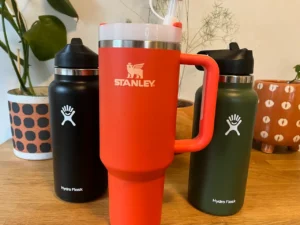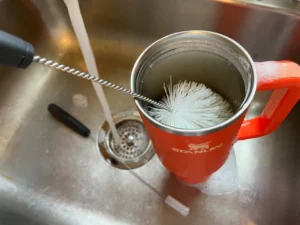Whenever something gets as popular as Stanley Cups, copycats and knock-offs are sure to follow.
And over the last year or two, it’s only gotten worse — with fakes being mass produced and sold by “influencers” and shady websites alike.
So how can you actually tell if your Stanley Cup is legit or just a convincing fake?
The most common ways to spot a fake Stanley Cup are to check if the logo is too low, look for misspelled words on the bottom, measure to see if the handle is too low, and to see if your Stanley’s color was ever actually released.
But unfortunately, there isn’t really any guaranteed way to spot a fake Stanley Cup. While most counterfeits have something fairly obvious wrong with them, some are actually pretty convincing.
Your best bet is to just buy directly from Stanley or another reputable retailer.
The Location Of The Stanley Logo Is Wrong

For whatever reason, the location of a Stanley Cup’s logo is something that many counterfeiters can’t quite nail down.
On legit Stanley Cups, there’s a little less than an inch of space between the top rim of your tumbler and the top of the Stanley logo.
Many fakes have the logo lower, sometimes substantially so.
If you suspect that you may have a fake Stanley Cup, it’s time to bust out the ruler.
Just keep in mind, if you have a 64 oz Stanley (which are rarely faked anyway), be aware that there’s a bit more space between the top lip of the tumbler and the logo, but still only about an inch between the logo and the start of the beveled edge.
There Are Misspelled Words On The Bottom

Because many fake Stanley Cups are made overseas by non-native English speakers, they often contain misspellings in the information printed on the bottom.
One of the largest batches of fakes contain two incorrect spellings, using ‘patene’ instead of ‘patent’ and ‘scale’ instead of ‘scald’. Some newer fakes are missing an ‘e’ in Seattle (unless Stanley recently moved shop to ‘Sattle’?).
While those words being spelled incorrectly are a sure sign that your Stanley Cup is fake, everything being spelled correctly isn’t necessarily proof that your Stanley Cup is real.
Unfortunately, there are plenty of fakes out there with no misspelled words.
The Handle Is Too Low

Another surefire sign that your Stanley Cup is fake is the handle being too low.
40 oz Stanley Cups (which are really the only sized fakes I’ve seen) have about 7/16” between the top lip and the top of the handle.
If the handle is noticeably lower, your Stanley is probably a knock-off.
The Color Was Never Actually Released By Stanley
Color-checking your Stanley Cup is a pretty reliable way to tell if your Stanley is fake.
While Stanley is constantly making the Stanley Cup in new and interesting colorways, fake Stanleys still come in a bunch of colors that have never actually been released.
Google the color of your Stanley and browse to see if it was ever an official release.
The “Deal” You Got Was Too Good To Be True
And finally, just use some common sense.
That random dude on TikTok selling “brand new Stanley Cups” for twenty bucks almost definitely isn’t selling the real deal.
Stanley Cups are so popular that they pretty much never go on sale and Stanley is a large enough company that they’re not selling wholesale to some dude to hustle out of his garage.
I know that shelling out $45 for a tumbler might be a stretch, but trying to get a too-good-to-be-true deal is an almost guaranteed way to end up with a low-quality fake.
It’s not worth the risk.
You’re better off just grabbing a more-affordable Stanley Cup alternative instead.




